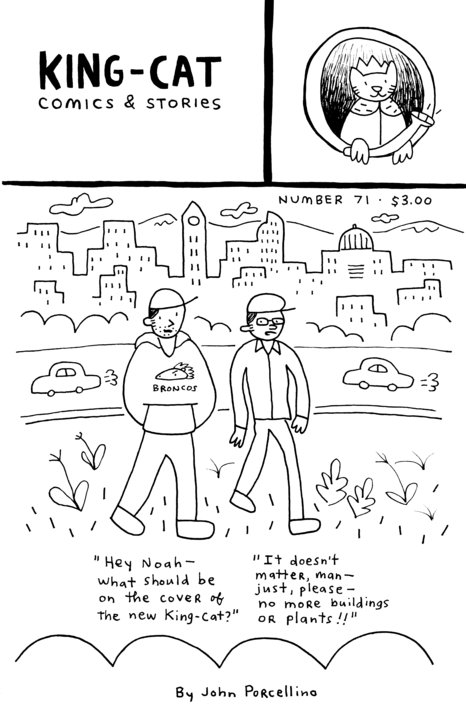Mini comics
Mini comics are handmade and personal comics that are often an expression of the authour's life, opinions and interests ect. They are a common inexpensive way for those who want to make their own comics on a very small budget, and are often informally distributed. Also, compared with
mainstream comics, they are only cost a small amount. Mini-comics can be very simple or very elaborately produced. A folded piece of paper that is opened like a book can be a mini-comic, and so can a 132-page die-cut rounded-corner die-cut book with a hand stamp on every other page. Despite the name, size matters not at all. Even though many mini-comics are very small, others are quite large.
Small press
This is a term often used to describe small-time publishers who usually don't publish more than 10 titles per year. Instead of being focussed on profit they tend to be more about getting the more unique books and comics seen by comsumers. Unlike most publishers they are independent and are not part of a bigger publishing house, which further shows that their motives behind publishing an author's ork is usually down to the fact they actually believe in it and like it personally, as opposed to it fitting a certain criteria or target audience.
Fanzines
A fanzine is an unoffical, unproffesional, magazine handmade by a fan of a certain theme/show/cultural phenominen, that is made for the enjoyment of others who share the same interest in whatever it may be.
Most often fanzines are distributed free of charge and the anyone who contritibuted to it recieves no financial compensation. Of course, traditionally they didn't cost a lot to produce as they were hand-drawn then simply photocopied and stapled. Sometimes they are swapped with other's at events and some even send them by post. Fanzines can be only pretty much any subject, with the themes varying from horror to punk.
 John Porcellino
John Porcellino
Porcellino was born in Chicago, in 1968, and has been writing, drawing, and publishing minicomics, comics, and graphic novels for over twenty-five years. He is best known for his self-published series King-Cat Comics, which he releases four times a year. He started them when he was just a teenager and as he has grown and developed, his subject matter and drawing style have also evolved.
John Porcellino’s comics are often described as deceptively simple: spare, childlike drawings accompanied by straightforward block-lettered text. The deception, however, is that the moments he describes in words and pictures—hearing a song on the radio, tossing bread crumbs to birds—seem small and quotidian, but are in fact both deeply personal and reflective of some larger aspect of the human experience.
Examples of a front cover of one of his issues and an inside feature:


We then made our own mini-comics inspired by Porcellino's work.
The finished piece
 |
| As you can see I imitated Porcellino's work by keeping the layout simple and using the triadic page structure. Like his front page, I did add a little more detail particularly with the trees and path. |
 |
| For the page on the left I drew up a Top 40 of my favourite songs, films, programmes and just general encounters and things. On the right I did a comic, an annecdote form when I was younger, in Porcellino's style. |
 |
| On the left the comic is continued and on the right I did a guide to surviving a hurricane from when I got stuck in NewYork with Sandy. It was inspired by a feature that Porcellino did once called 'Dr Abbot's Guide To Surviving Women'. |
 |
| For this double page I did another comic and a simple one box image on the left. It has lots of white space and the text used was a quote from a poem. The whole idea of this was to just provoke thought. |
 |
| This is a close up of one of the comics I did. As you can see I tried to stick to Porcellio's drawing style as much as possible so the images are simplistic with lots of line use. Even though, the finished drawings appear minimal I actually found adapting to his style quite hard and I found that a lot of planning ahead, and drafting in pencil, was needed. |
 |
| For my final page I wrote a small memoir-like piece. The biggest challenge with writing text throughout this comic was copying Porcellino's shifts between upper and lower case. At first it was very forced. but eventually it became easier to slip between upper and lower case. |
Reading through each others work:
























